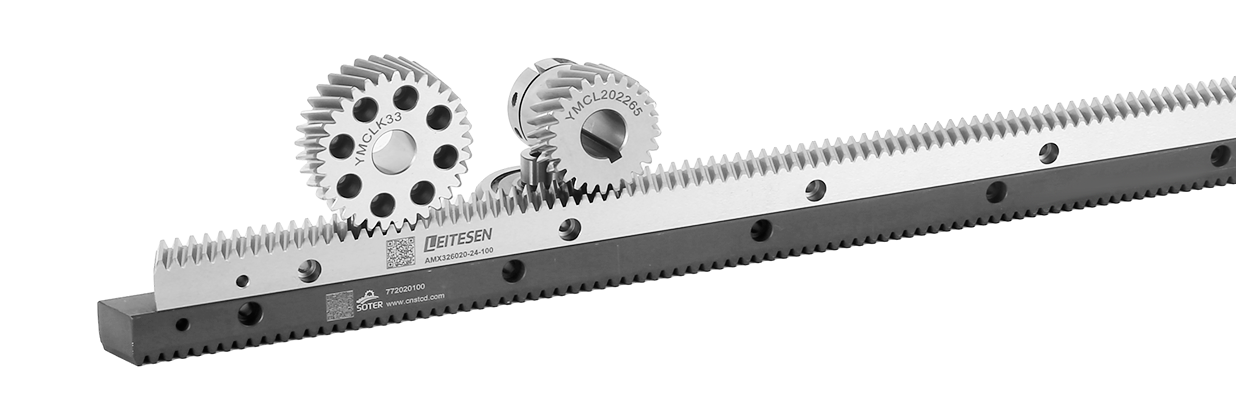Jul 11, 2025
The helix angle is a defining characteristic of a helical gear rack, directly affecting its transmission performance and operational behavior. This article examines how variations in the helix angle impact factors such as load capacity, noise, efficiency, and durability in mechanical applications.

Understanding the Helix Angle in Helical Gear Racks
The helix angle refers to the angle at which the teeth of the gear rack are cut relative to the axis of the rack. In a helical gear rack, unlike a straight gear rack, teeth are inclined rather than perpendicular, creating a spiral or helix pattern along the length of the rack.
Common helix angles range from about 15 to 30 degrees, though specific values depend on the design requirements and application context. This angled tooth design facilitates smoother engagement between the gear rack and the mating helical pinion.
Effects of Helix Angle on Load Distribution and Capacity
One of the primary impacts of the helix angle is on how load is distributed across the teeth during operation. A larger helix angle increases the contact ratio, meaning more teeth are in contact at the same time. This distribution spreads the applied forces over a greater surface area, reducing stress concentrations and enabling the gear rack to carry higher loads without premature wear or failure.
However, an excessively large helix angle may cause increased axial thrust forces on the gear and rack bearings. This additional thrust requires careful bearing design and proper support to avoid mechanical issues or reduced lifespan.
Influence on Noise and Vibration Levels
The gradual engagement of teeth due to the helix angle significantly reduces noise and vibration during transmission compared to straight-tooth gear racks. Increasing the helix angle generally enhances this effect, producing smoother and quieter operation.
This makes helical gear racks with optimized helix angles suitable for precision machinery and environments where noise reduction is critical, such as robotics, automotive steering, and CNC equipment.
Impact on Transmission Efficiency and Heat Generation
While higher helix angles improve load sharing and noise characteristics, they can also introduce greater sliding action between mating teeth. This sliding increases friction and may slightly reduce transmission efficiency compared to gear racks with smaller helix angles.
The increased friction also causes more heat generation during operation, necessitating effective lubrication and sometimes heat dissipation measures to maintain system reliability.
Balancing Design Trade-offs
Selecting the appropriate helix angle for a helical gear rack involves balancing multiple factors: load capacity, noise level, transmission efficiency, and mechanical complexity.
Smaller helix angles tend to reduce axial forces and friction but may cause higher noise and lower load capacity.
Larger helix angles improve smoothness and load distribution but increase axial thrust and frictional losses.
Designers must evaluate these trade-offs based on the intended application, operational speed, load requirements, and maintenance conditions.
Practical Considerations and Applications
In high-load, high-speed machinery where quiet operation is vital, larger helix angles are often favored despite the need for more robust bearing support. Conversely, in applications with lower loads or where reducing axial forces is critical, smaller helix angles may be preferred.
Proper lubrication is essential regardless of the helix angle, as it mitigates frictional wear and heat buildup. Materials and heat treatment processes should also complement the selected helix angle to ensure durability and precision.